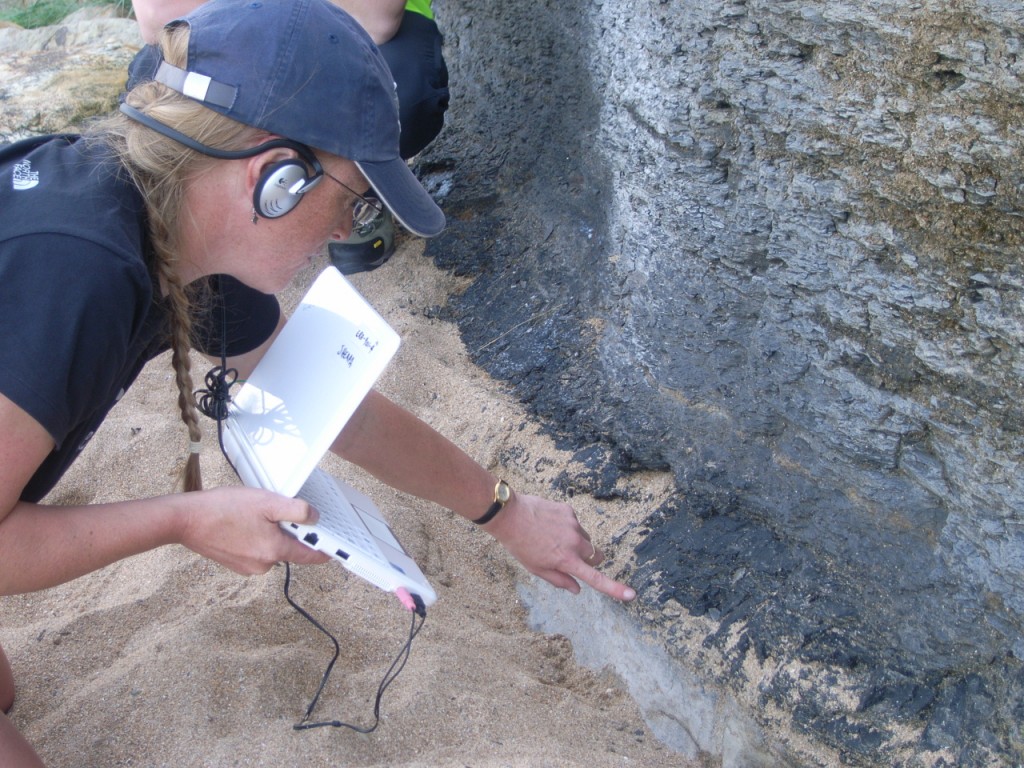During our field trials, it became clear that the built-in video camera on the Asus EEE 901 (and 701) is in the wrong place for our needs.

Using the Asus Eee PC 701's built in camera to capture geological features. The camera is built in to the top of the screen and is clearly designed for 'video diaries' or online video conferencing rather than capturing views of the landscape.
The 901 camera itself is a pretty good (for a plastic lens webcam) 1.3 megapixel device that’s supported in Ubuntu, but it faces the user, and we want it to face the rest of the world. Additionally, we found when using an external USB webcam, that being able to hold a smaller separate device or mount it on a helmet, rather than trying to point a whole netbook, was both easier and safer when clambering about on the rocks. From our experience and listening to the field geologists, we came up with a wish list of properties for a new video camera…
* Separate from the laptop body – more pointable, allowing the user to have the option not to have the laptop in their hands when climbing about.
* Better optics/CCD – even though we’re using a fairly small stream, we would be able to see more detail if we had higher quality pictures to start with.
* Video monitor on camera – the usb webcam was hard to point accurately without the local video monitor on the netbook.
* Hardware MPEG-4 encoding – if the camera could do MPEG-4 encoding, a better quality or lower bandwidth video stream could be sent over the network. The current webcams mostly use Motion-JPEG (a sequence of JPEG files), which is high quality but high bandwidth, or the netbook can process the video into a compressed format (e.g. MPEG-4) before streaming, which has a high processor overhead.
In terms of hardware, we looked at several types of devices to help us:
High quality webcams – like the Logitech Quickcam Pro.
USB video capture devices – this would allow pretty well any type of analogue video camera, from a tiny CCTV camera to a full size camcorder to be connected as a webcam, and in some cases the USB capture card/frame grabber may have MPEG encoding hardware built in.
IP cameras – some IP cameras have useful features like hardware MPEG encoders, webservers, power over ethernet (PoE) and wifi.
Mini Digital Video Recorders – these are popular with outdoor sports enthusiasts, they typically have either a built-in camera or analogue video input and record hardware MPEG encoded video to a flash memory card of some sort. They sometimes have live or playback displays and usually have USB connectivity for uploading video. They are battery powered and weather resistant. Occasionally they also have ethernet connections either for use as webcams or for device management.
We also found a rather unusual hybrid device, a mini-webcam server with an analogue video input, ethernet interface for device control and video output.
Pingback: Portable VoWLAN: A portable voice over wireless local area network for mobile learning « VoWLAN